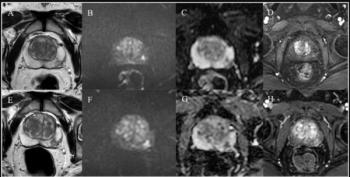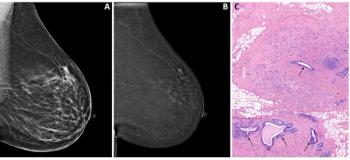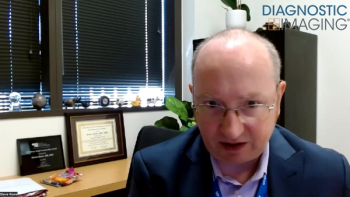
IR popliteal aneurysm fix moves to center stage
Popliteal stenting is maturing rapidly, spurred by research as well as high visibility following Vice President Dick Cheney's recent surgery to repair aneurysms behind both knees. All that's needed to propel the technique from experimental to practical is FDA approval of stent-grafts for this application.
Popliteal stenting is maturing rapidly, spurred by research as well as high visibility following Vice President Dick Cheney's recent surgery to repair aneurysms behind both knees. All that's needed to propel the technique from experimental to practical is FDA approval of stent-grafts for this application.
Popliteal stenting has been around for about a decade, but early work resulted in a high rate of clinical failure and reocclusion. Earlier generation stents did not have longitudinal flexibility, were not self-expandable, and were prone to fracture. The application quickly fell out of favor.
In recent years, however, favorable reports have appeared and stent-graft technology has advanced, including the use of polytetrafluoroethylene (PTFE), a substance that reduces inflammation, and nitinol, a metal alloy that enhances flexibility. The latter innovation is particularly important in the tortuous vascularity of the lower extremities.
Cheney's operation initially involved placing two overlapping 9-mm PTFE-covered Viabahn stent-grafts in the right popliteal artery. The procedure went so smoothly that the multidisciplinary team at George Washington Hospital made an intraoperative decision to repair the aneurysm behind the left knee as well. Some critics at the time called the decision irresponsible.
"It's interesting to listen to armchair quarterbacks," said Dr. Anthony C. Venbrux, director of interventional radiology at the hospital and leader of the operating team. "We made decisions based on how well things went. Although the procedure took a while, everything went very, very smoothly."
Similarly, it used to be an absolute contraindication to stent both kidneys, Venbrux said. But now it is occasionally done, because advances in technology make it feasible when the circumstances call for it.
The decision to repair both knees would depend on a number of factors including aneurysm size, imaging characteristics, the presence of intrasac thrombus, and runoff status, according to Dr. John H. Rundback, director of interventional radiology at Holy Name Hospital in Teaneck, NJ.
"If the second aneurysm was 1.5 cm to 2 cm without any thrombus, I'd probably watch it," said Rundback, who was not part of the Cheney medical team.
Initially approved to repair tracheal-bronchial strictures, the Viabahn endoprosthesis received a nod from the FDA in June 2005 for primary stenting in the superficial femoral artery (the only stent-graft with vascular approval). The use of any stent-graft for popliteal aneurysms is considered investigational.
Following Cheney's procedure, the Viabahn stent-graft makers received a call from the FDA, according to Melissa Brookshier, product specialist for the company, W. L. Gore & Associates. She would not specify the nature of the call but said the company is discussing requirements for approval with the FDA.
"Most of what interventional radiologists do is off label, because the devices are generally approved for narrow indications," said Dr. Barry Katzen, medical director of the Baptist Cardiac and Vascular Institute in Miami and a member of Cheney's operating team.
Data presented to the FDA by Gore to receive approval of the device in the superficial femoral artery demonstrated a 25% increase in primary patency of lesions at 12 months compared with percutaneous transluminal angioplasty. A prospective single-center Italian study by Antonello et al found that the Viabahn stent-graft (also known as Hemobahn in Europe) used for popliteal aneurysms had a one-year unassisted patency rate of 87% and a secondary patency rate of 100%. Follow-up was nearly five years. Surgery had a one-year primary patency rate of 100% (J Vasc Surg 2005; 42:185-193). Although the cohort was small (30 patients), the results are promising, Rundback said.
"This is extraordinarily appealing, because surgery involves roughly three to four days in the hospital and four to six weeks in recovery. The interventional approach is an outpatient procedure with virtually no recovery, which was probably a consideration with the vice president," he said.
A study from the University Medical Center Groningen in the Netherlands reported similar success. Tielliu et al analyzed 57 consecutive patients whose popliteal aneurysms were endovascularly repaired with the Hemobahn. Primary and secondary patency rates were 80% and 90% at one year, respectively, and 77% and 87% at two years. Postoperative treatment with clopidogrel proved to be the only significant predictor for success (J Vasc Surg 2005;41:561-567).
The concern with popliteal aneurysms is not rupture, as with aortic and intracranial aneurysms. Instead, interventionalists worry about the turbulent and nonlaminar flow, which results in large amounts of thrombus, often resulting in "trash foot," Rundback said.
Rates of amputations in patients with popliteal aneurysms exceeding 2 cm, particularly when imaging shows intrasac thrombus, are as high as 40% to 60%. More than one-third of these patients have bilateral popliteal aneurysms.
For now, the gold standard for repair of popliteal aneurysms is surgery, but that could change.
"A lot depends on the emerging data, particularly the long-term effects. Right now, we know that in the short term there is a great reduction in morbidity and mortality. We may see the gold standard change in two years," Katzen said.
Newsletter
Stay at the forefront of radiology with the Diagnostic Imaging newsletter, delivering the latest news, clinical insights, and imaging advancements for today’s radiologists.






























